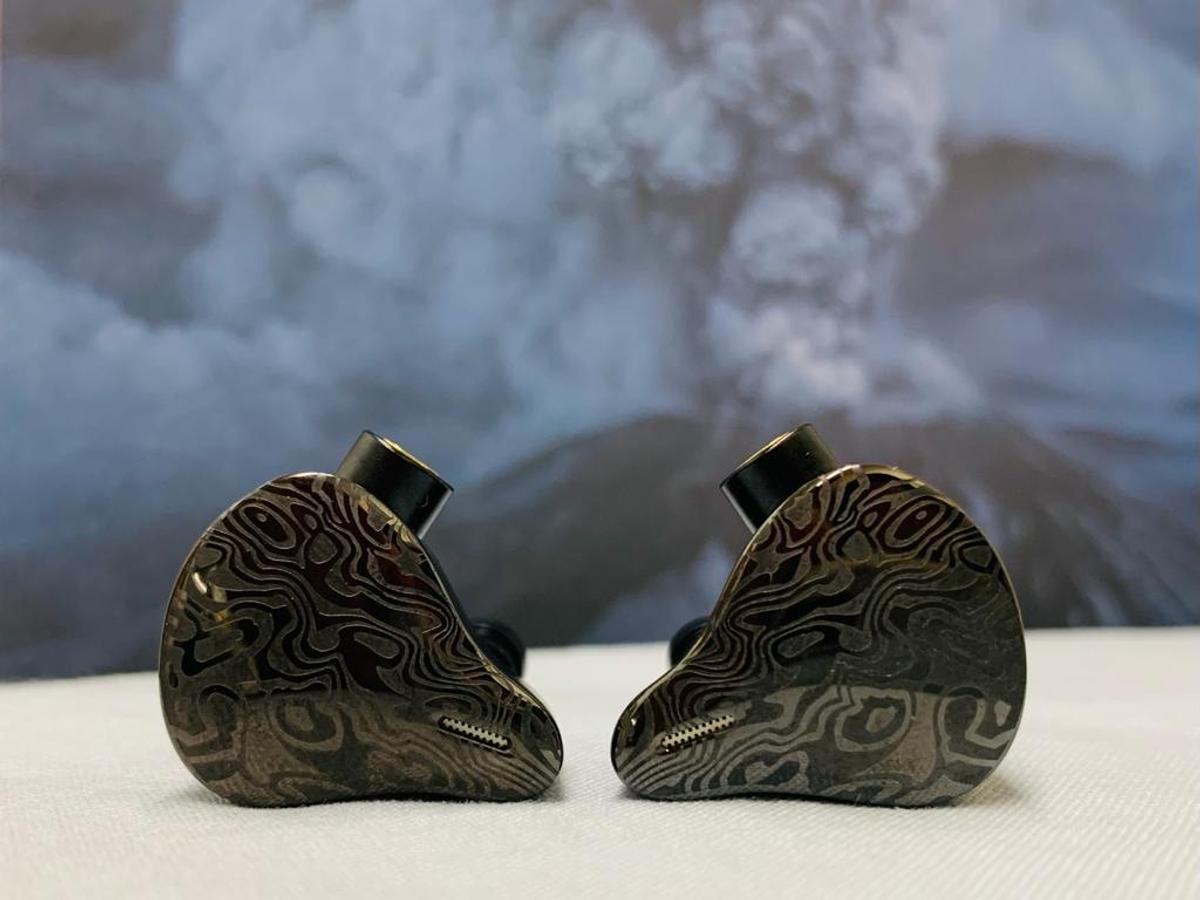DUNU’s latest foray into the competitive mid-fI segment sport a unique driver configuration and big sub-bass!
In many cultures, the term “Vulkan” refers to a volcano. Specifically in Roman mythology, Vulcanus was celebrated as the god of fire, volcanoes, forges, and metalworks.
- Light, comfortable yet solid build
- Very premium accessories
- The cable features swappable modules to give options for balanced and unbalanced sources
- Easy to drive but scales with amplification
- Excellent sub-bass rumble to please bassheads
- Good timbre for a BA containing set
- Great imaging and soundstage
- 7-8 kHz area can be sibilant and fatiguing
- Unique tuning may be too colored for purists
- Not the most detailed mid-fi pair of IEMs
The Vulkan IEMs we are unearthing today rock the house down with massive sub-bass that will please even the most ardent of bassheads!
Company Overview
DUNU is one of the most reputable chi-fi brands and has manufactured and developed earphones since 2003, including OEM/ODM products for other audio companies.
Boasting huge production facilities and a comprehensive suite of state-of-the-art testing equipment – in particular, Brüel & Kjær head-and-torso simulators, spectral analyzers, and anechoic chambers – DUNU does their driver development totally in-house.
DUNU has obtained internationally-recognized acoustic research achievements and patents. DUNU was one of the pioneers in developing a full beryllium dome single DD IEM in the LUNA, which are still regarded as one of the top-of-the-line single DD sets that can match multi BA/hybrid IEMs in resolution (most other purported beryllium DD IEMs are plated or coated only).
DUNU has also released some crowd favorites, such as the Titan S, DK-2001, Zen Pro, EST 112, and SA6, in addition to having a vast accessory line-up.
Technical Specifications
- Form: IEMs
- Drivers: 2x coaxial dynamic drivers (8 mm cross-linked polyethylene structural foam cell dome and 8 mm nanocrystalline titanium-coated diaphragm) and 4 x Knowles balanced armature drivers (mid-high driver and dual supertweeter)
- Impedance (Ohm): 15 Ω
- Sensitivity (dB): 109 dB
- Frequency Response (Hz): 5 Hz – 40 kHz
- Removable Cable: Y
- Cable: 4 core high-purity silver-plated OCC (Ohno Continuous Cast) copper type 1 Litz (DUNU DUW-02S)
- Source Plug: Q-Lock PLUS quick-switch modular plug system with plug terminations for 3.5 mm TRS single-ended, 2.5 mm TRRS balanced, and 4.4 mm TRRRS balanced
- Cup/Shell Plug: Patented catch-hold MMCX connectors
- Mic: N
Packaging
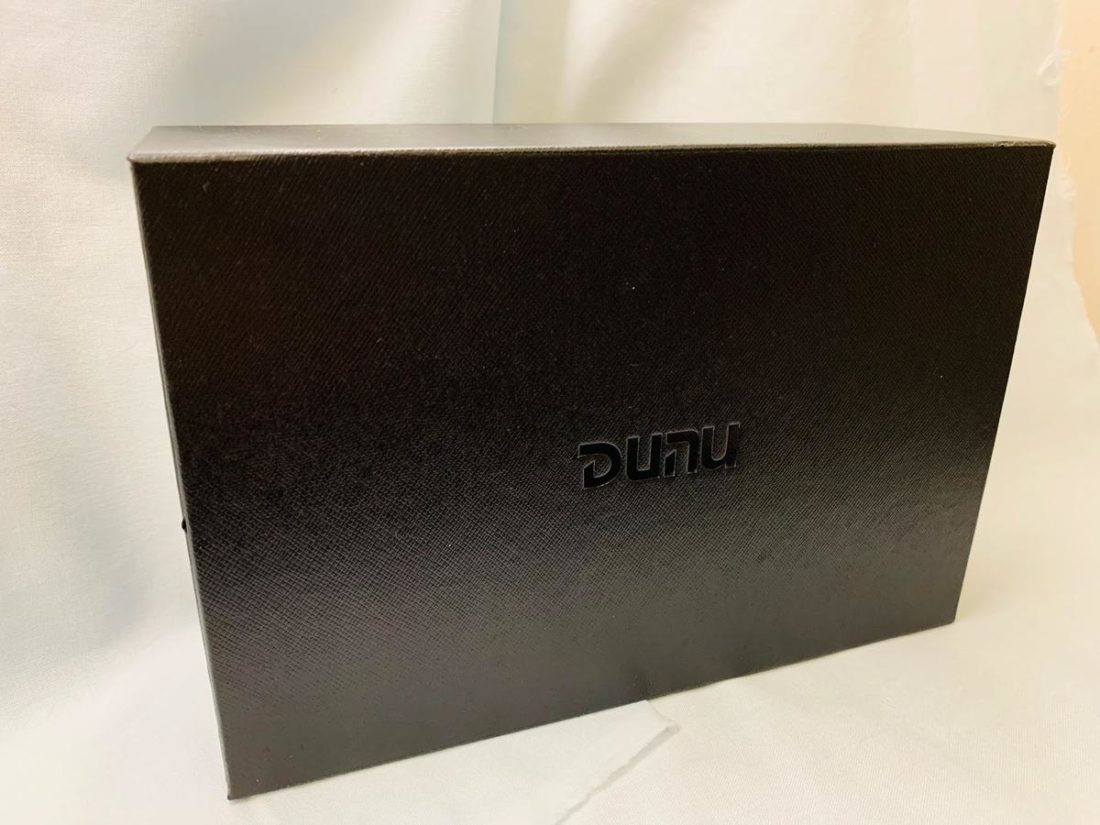
In the box
- DUNU Vulkan IEMs
- 3 x grey balanced silicone ear tips (S/M/L)
- 3 x red core silicone ear tips (S/M/L)
- 3 x black wide-bore silicone ear tips (S/M/L)
- Micro-fiber cleaning cloth
- Cleaning brush
- Cable (DUNU DUW-02S)
- Leatherette carrying case
- 3.5 mm to 6.5 mm adapter (DUNU DC-16)
- Airline adapter
The accessories are really generous for a mid-fi set. There can be no complaints on this front!
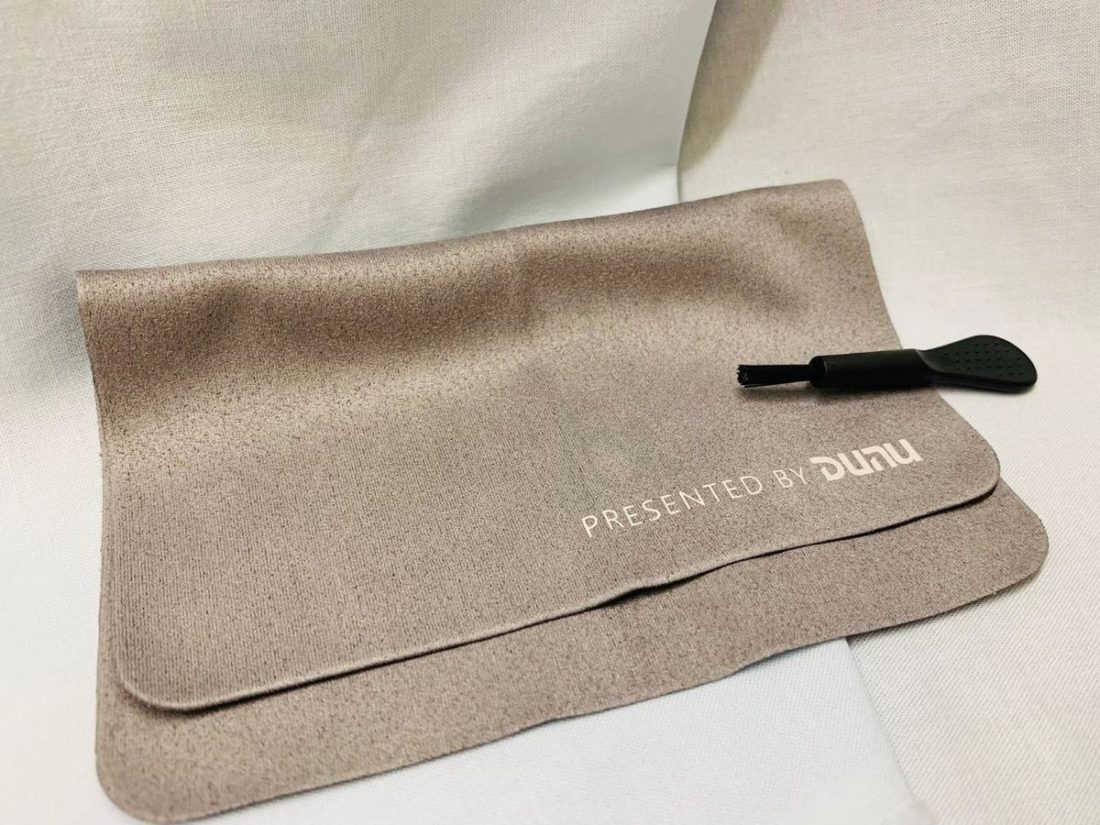
Ear tips
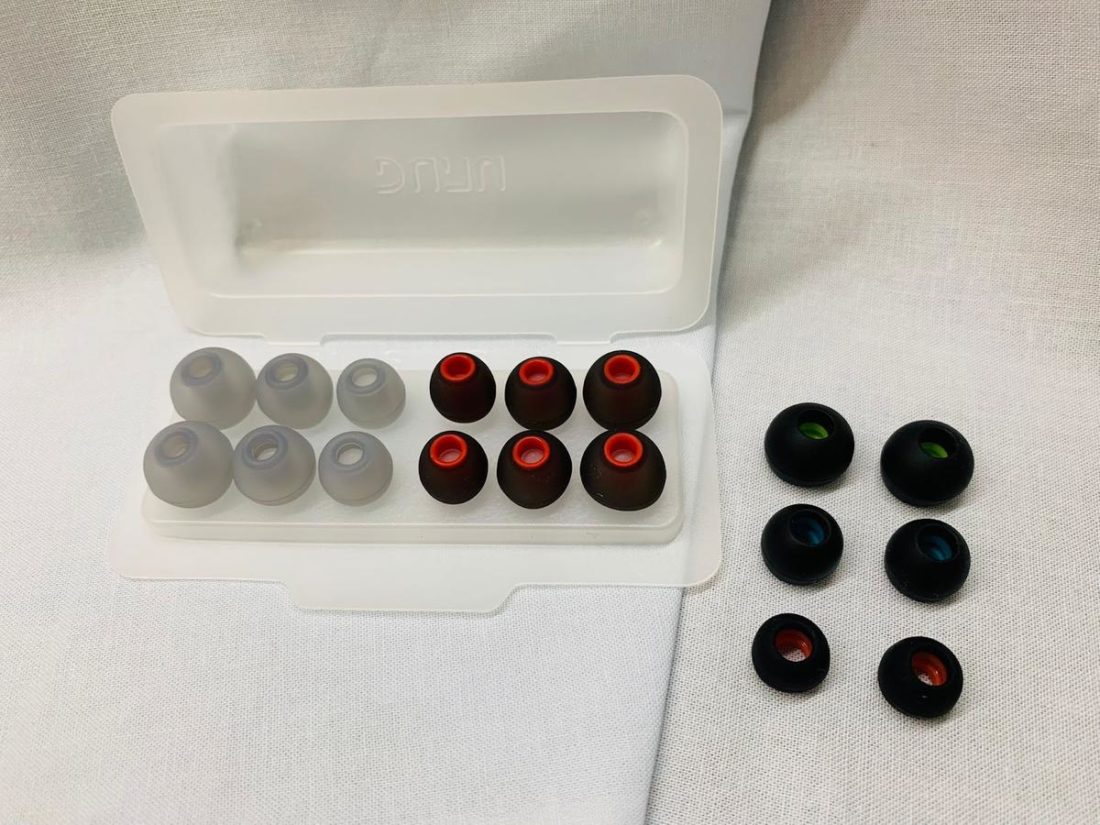
Explore tip-rolling to see what suits your preferences, as ear tips are as personal as shoes; they can affect comfort, isolation, and the sonic perception of an IEM.
I don’t really like the wider bore (black) ear tips, even though they give better soundstage and resolution. They make the upper frequencies too hot, and as we will read below, the 7 – 8 kHz area can be overly spicy.
Between the other two pairs of tips, I enjoy using the grey (balanced) ones, as they give a good mix of sub-bass extension without overly boosting the upper frequencies.
Cable
The Vulkan’s stock cable is a 4 core, 26 AWG, high-purity silver-plated OCC (Ohno Continuous Cast) copper cable. The four cores are hand-braided into a Litz braid. This cable is also sold separately as the DUNU DUW-02S.
The selling point of this cable is DUNU’s patented and exclusive Q-Lock PLUS quick-switch modular plug concept. At the distal end, a proprietary locking mechanism allows one to interchange between 2.5 mm, 3.5 mm, and 4.4 mm connectors.
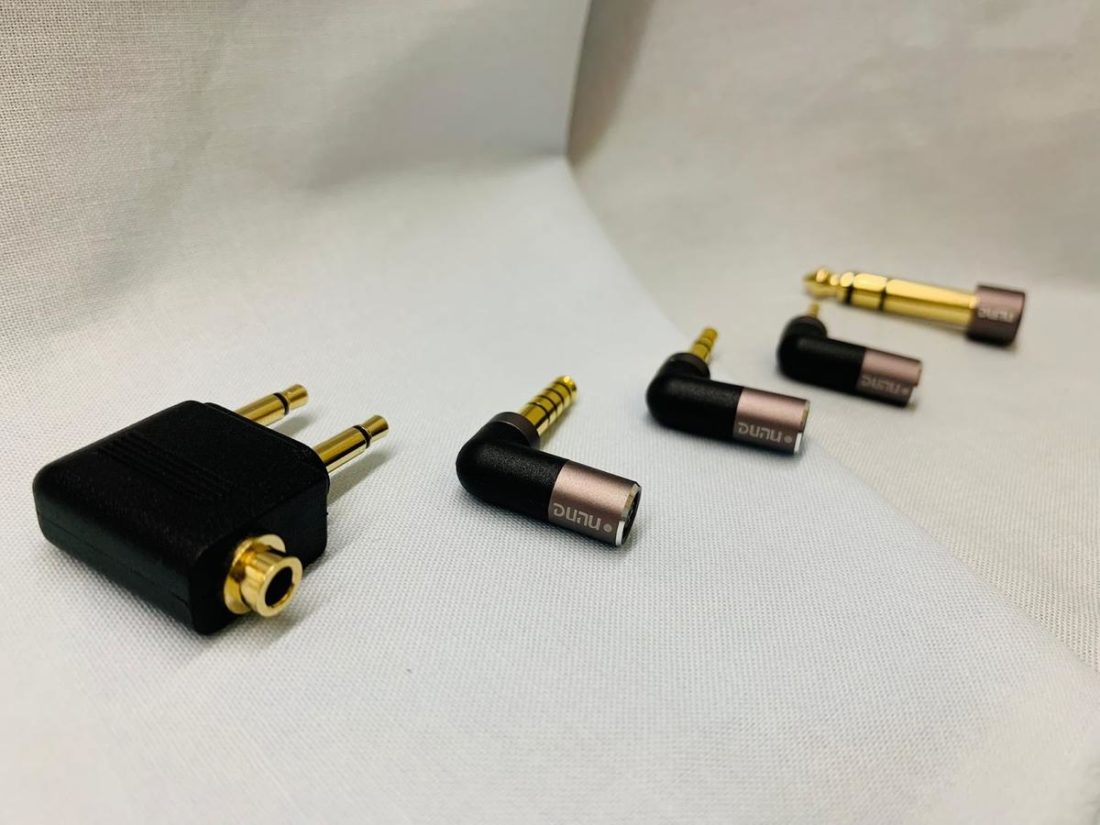
This concept is really nifty, as it allows users to swap between various balanced and unbalanced sources on the fly without purchasing additional aftermarket cables.
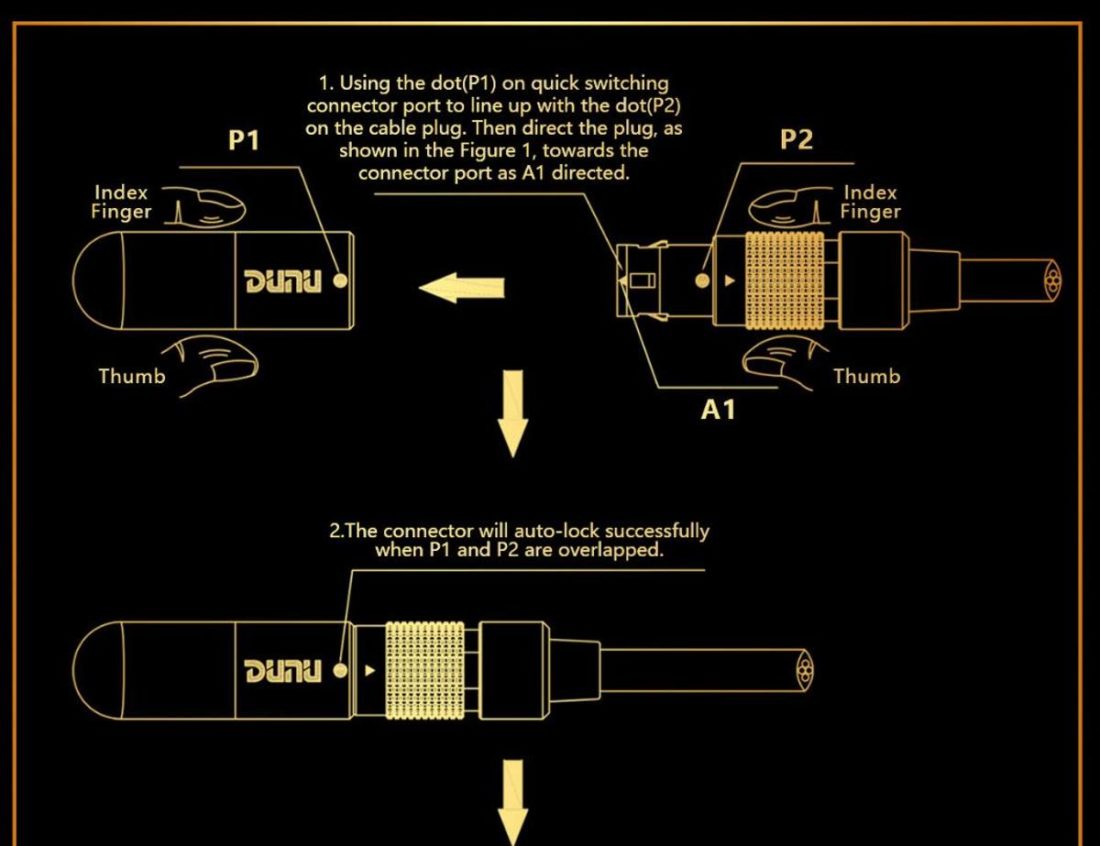
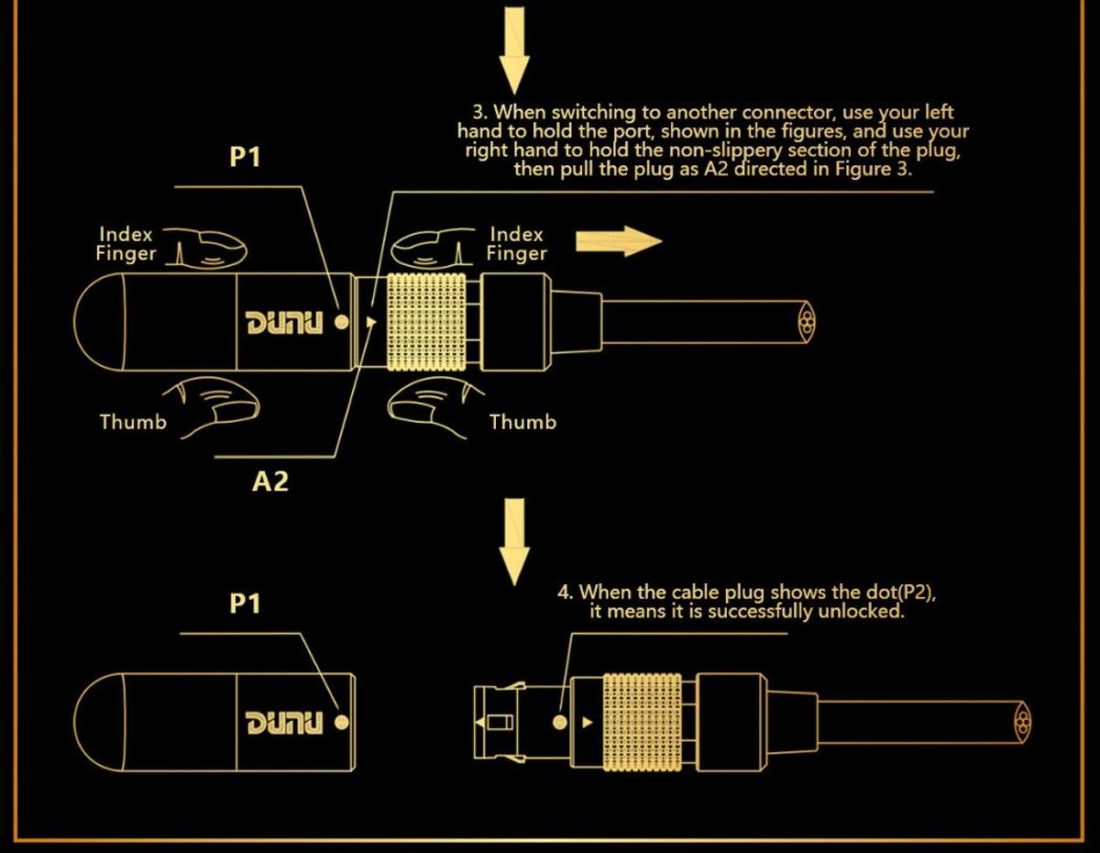
While I’m not really a fan of MMCX connectors (which may potentially fail with repeated cable changes), the modular concept of this cable should negate the need to keep changing cables.
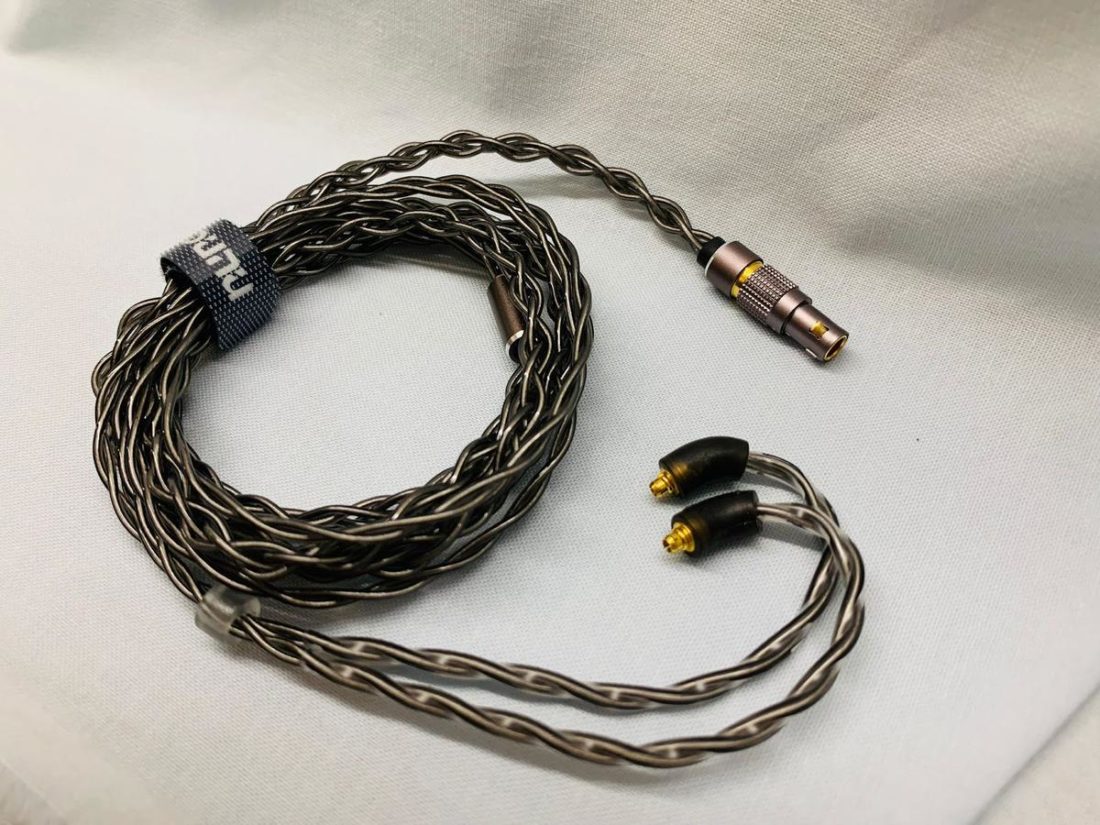
This cable is very well-braided, supple, and comes with a chin slider. Microphonics are minimal. There are L and R markings on each end to identify the sides.
Case
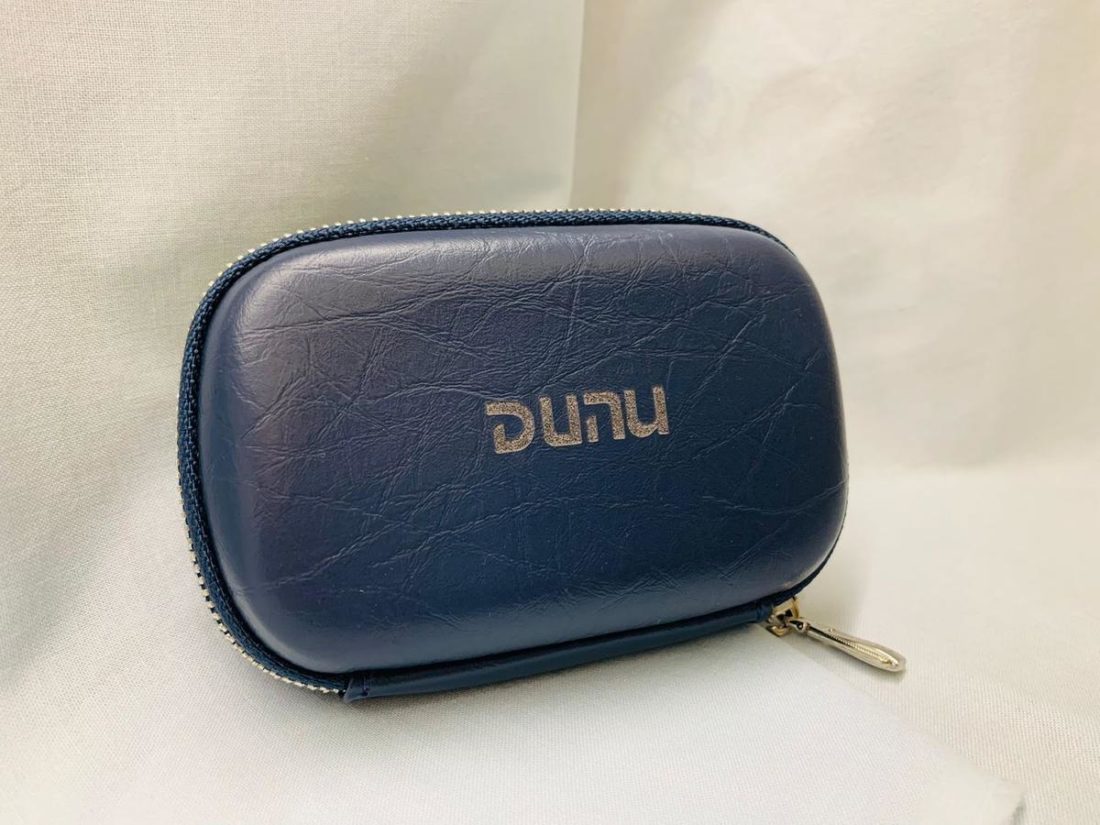
A semi-rigid leatherette case is included, with DUNU’s logo embossed on the front. The inner layer is lined with a velvety material with some webbing too.
Design
The Vulkan shells feature a serpentine igneous rock-like motif; this synchronizes perfectly with their volcanic namesake! In fact, the shells are inspired by mokume gane, a Japanese metalworking technique used in swords, jewelry, and craftwork.
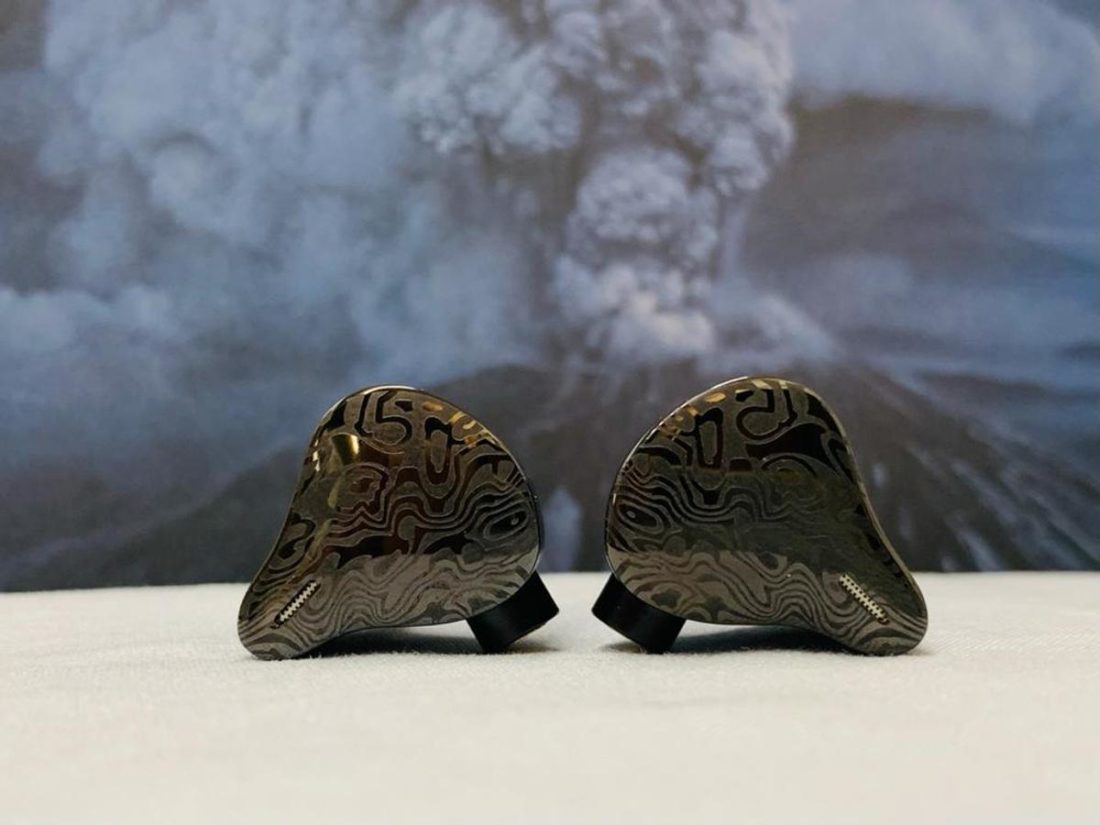
The shells are fashioned from CNC (computerized numerical control) machined aluminum shells. DUNU advertises that they use a 3D printed acoustic wave-guide mounting bracket, which theoretically improves the coherence of imaging.
The left and right earpieces are marked with L and R lettering, respectively. Despite being vented, isolation is above average, and the Vulkan are well-suited for outdoor usage.
Comfort
Weighing in at 17g apiece, the Vulkan shells are very light yet of solid build due to the aluminum frame. They are very comfortable despite their larger size. Ergonomics are top-notch, and I do not experience any discomfort.
Internals
DUNU does a lot of in-house research and development for their IEMs, and the Vulkan incorporate many innovative designs.
Firstly, they utilize a labyrinthine Air Control Impedance System (ACIS), which essentially reinforces the coaxial dynamic driver’s response without compromising bass speed or texture.
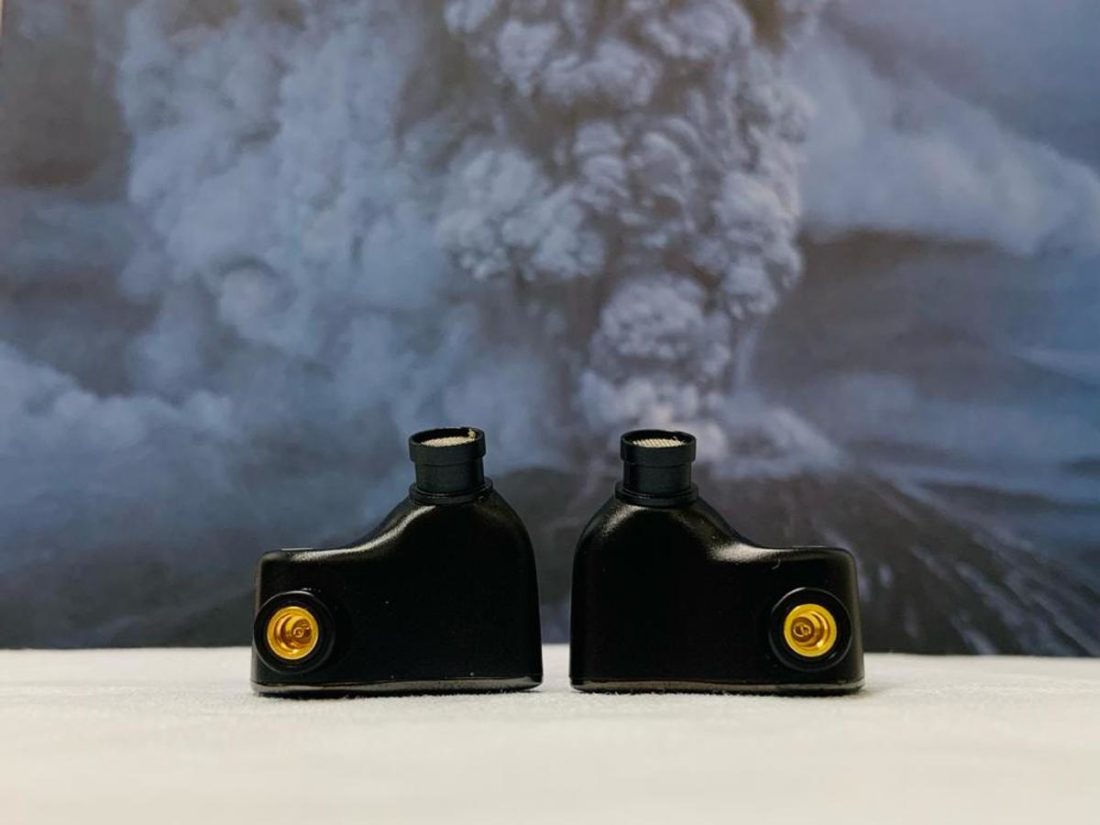
A structural foam cell 8mm dynamic driver is the first of the DDs used in the Vulkan. This driver is apparently sourced from Furukawa Electric and boasts a lightweight yet rigid design, which creates deep bass and accurate reproduction of dynamics.
A nanocrystalline titanium-coated dynamic driver lies behind the aforementioned foam cell DD, completing the coaxial pairing. In tandem, they are intended to reproduce the lower frequencies with pinpoint linearity and accuracy.
4 Knowles balanced armature drivers (2 mid-high drivers and a dual supertweeter) create the upper mid-range and treble frequencies.
DUNU Vulkan Sound
The Vulkan are easy to drive, but they do scale with amplification, with tighter and more extended bass and better dynamics when juiced adequately.
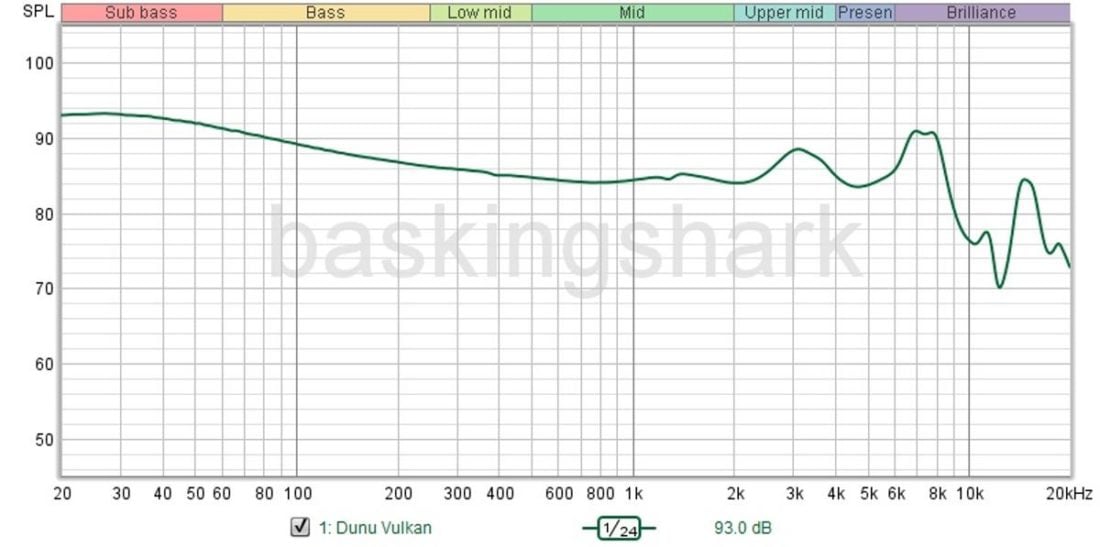
The Vulkan’s sound signature can be described as U-shaped.
In the technicalities department, imaging, instrument separation, and layering are very good. Micro-details are decent enough but not class-leading at the mid-fI bracket. The soundstage is expansive in 3 dimensions (especially in width), with music sounding spacious without much compression.
For timbre-freaks, there’s a very slight BA timbre for acoustic instruments, which is to be expected once BA drivers are used. But by and large, the timbre is quite well portrayed and sounds quite natural.
Bass
As per the graphs, the Vulkan are a sub-bass focused set, with massive rumble and extension to the bowels of the earth. Assuming a good seal is obtained, on sub-bass heavy tracks, there is a visceral jaw-rattling rumble that goes all the way to the chest!
Bassheads will have a field day with the Vulkan. Despite the copious bass quantity, surprisingly, it retains quite high quality. The bass is very textured, tight, and fast, with no mid-bass bleed.
The big bass on tap brings head-banging and toe-tapping fun to the table but may not suit certain music genres, such as classical and jazz, where a more neutral bassline may be desired by purists.
Midrange
Most basshead sets suffer the cardinal sin of having too much mid-bass encroaching into the midrange frequencies. I’m glad to report that there is none of that here, and this region is clear and transparent. The lower midrange is neutral, as the mid-bass does not give warmth to this area.
The upper midrange is actually more forward than what the graphs would suggest. However, as the pinna gain is not as marked as per conventionally tuned competitors, vocals are just a tinge forward without much shoutiness.
Treble
Treble-sensitive people might want to note that the treble is somewhat hot in the 7-8 kHz region. There’s quite a lot of clarity and transparency in the upper frequencies, but unfortunately, this introduces sibilance, and cymbals may come across as a bit “splashy.”
The big sub-bass does provide a nice counterpoint for the treble, and different ear tips can also tame the 7-8 kHz regions to some extent.
Comparisons
The Vulkan will be compared against some other mid-fi hybrids/tribrids. Single DD and pure BA IEMs were left out of the comparison as the different transducer types have their own pros and cons.
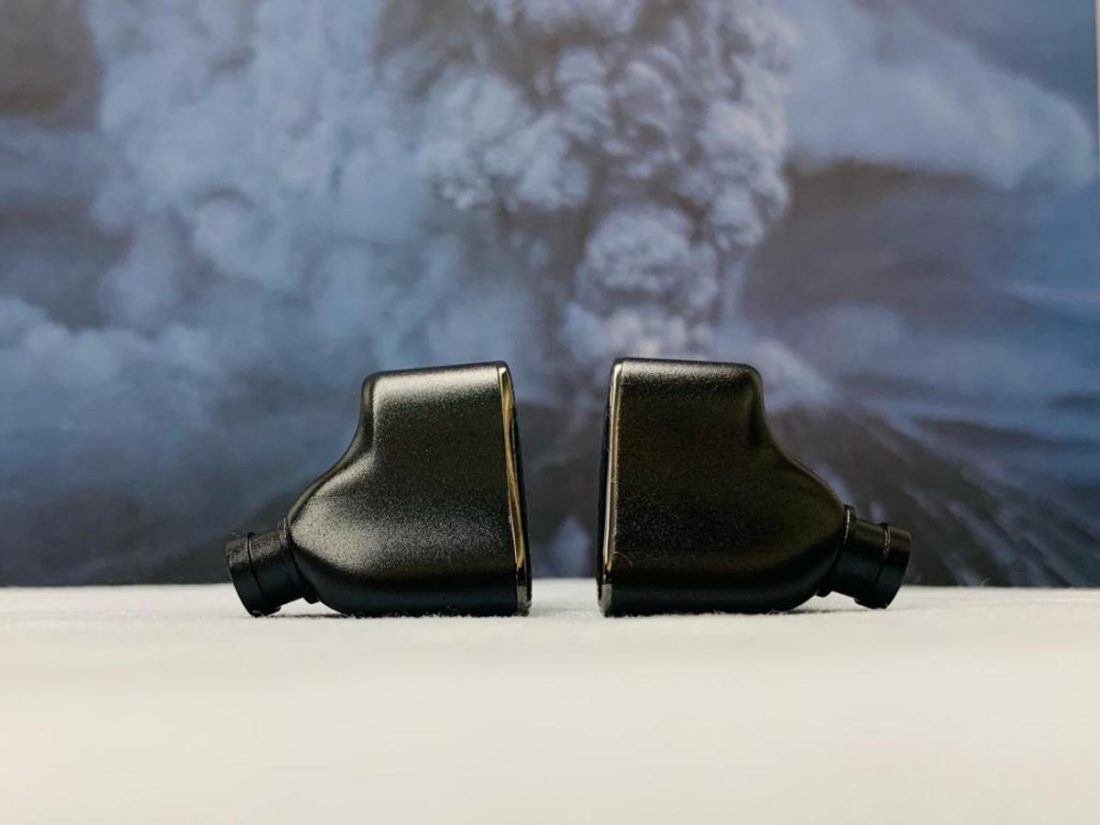
Vs. LZ A7
The LZ A7 are a unique tribrid that are extremely versatile; they can provide 10 different sound signatures on the go, due to each housing having both a tuning nozzle and tuning switch. The A7 can be tuned to a myriad of chameleonic signatures, from V-shaped to neutral.
Comparisons of tonality between these two mid-fI titans are difficult due to the various permutations. Nevertheless, regardless of switch or nozzle, the LZ A7 still sound a bit more natural in timbral accuracy.
In the technicalities department, it is a wash between the two. The LZ A7 have better micro-details and soundstage, but the Vulkan have superior imaging and instrument separation.
Build seems to be better on the Vulkan. The MMCX connectors don’t feel as robust on the LZ A7 during cable swaps, and the LZ A7’s aesthetics are underwhelming and border on ugly.
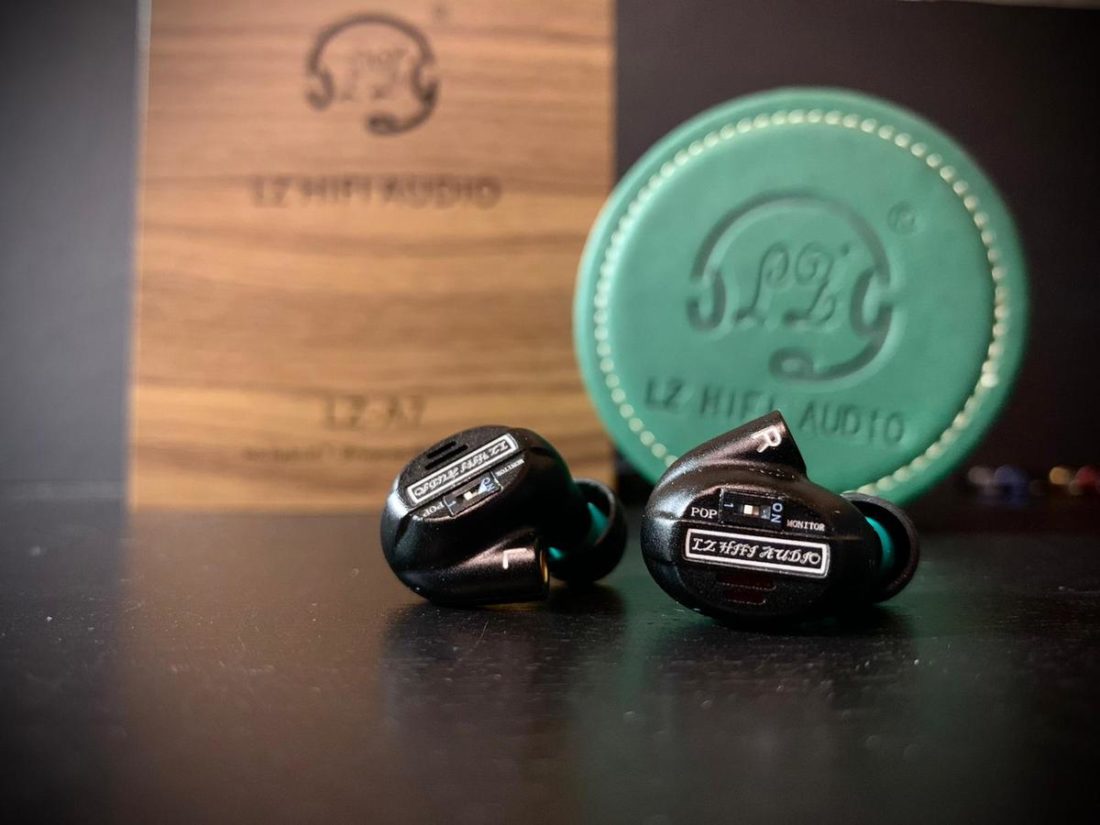
The LZ A7 are definitely more versatile, but I consider the two sidegrades in technicalities. Looks go to the Vulkan anyday!
Vs. Sony XBA-N3
The XBA-N3 are an L-shaped bassy set with rolled-off treble. They are much smoother, have a thicker note weight, and are more analogue-sounding than the Vulkan.
The XBA-N3’s bass is mid-bass focused compared to the sub-bass predominant Vulkan. The XBA-N3’s bass also isn’t as tight and clean, with copious mid-bass bleed and less texture.
The XBA-N3 have a more natural timbre, but they are weaker in resolution and clarity. The XBA-N3 shades it a bit in soundstage, but the poorer imaging and separation of instruments can make the soundscape fuzzy.
Build and isolation are not as great on the XBA-N3, but the XBA-N3 can also be used cable down, given their bullet-shaped design.
These two pairs are bonafide basshead sets, but they present bass in a different flavor: the XBA-N3 gives much more mid-bass slam, whereas the Vulkan are more technical with greater sub-bass rumble and extension and less mid-bass bleed.
Vs. Rosetechnics QT9 MK2S
The Rostechnics QT9 MKS have less mid-bass and sub-bass quantity than the Vulkan and have a more boosted pinna gain region. Note weight is thinner on the QT9 MKS2, and they can sound shriller and more fatiguing in the upper midrange.
In technicalities, the QT9 MK2S have a less expansive soundstage but have superior micro-details and imaging.
Isolation is poorer on the QT9 MK2S, and their fit is a bit iffy due to their very short nozzles.
The Vulkan are definitely bassier, but the treble peak of the QT9 MK2S lies at the lower treble/upper midrange, whereas the Vulkan have their peak at the 7-8 kHz region.
If one is sensitive to upper mids, the Vulkan will be the better option, but those who dislike sibilance may want to consider the QT9 MK2S instead.
Where to Buy
Conclusion
The Vulkan eschew a run-of-the-mill Harman-tuned signature for something very unique and different: a basshead set with big sub-bass, yet preserving a transparent midrange.
Accessories and build are stellar, and the innovative modular cable ensures that the Vulkan can be paired with almost any source.
The Vulkan sound as good as they look; they have superb soundstage and imaging, coupled with a clear midrange. Sub-bass is, of course, the star of the show, and as per their namesake, these indeed rumble like a volcano.
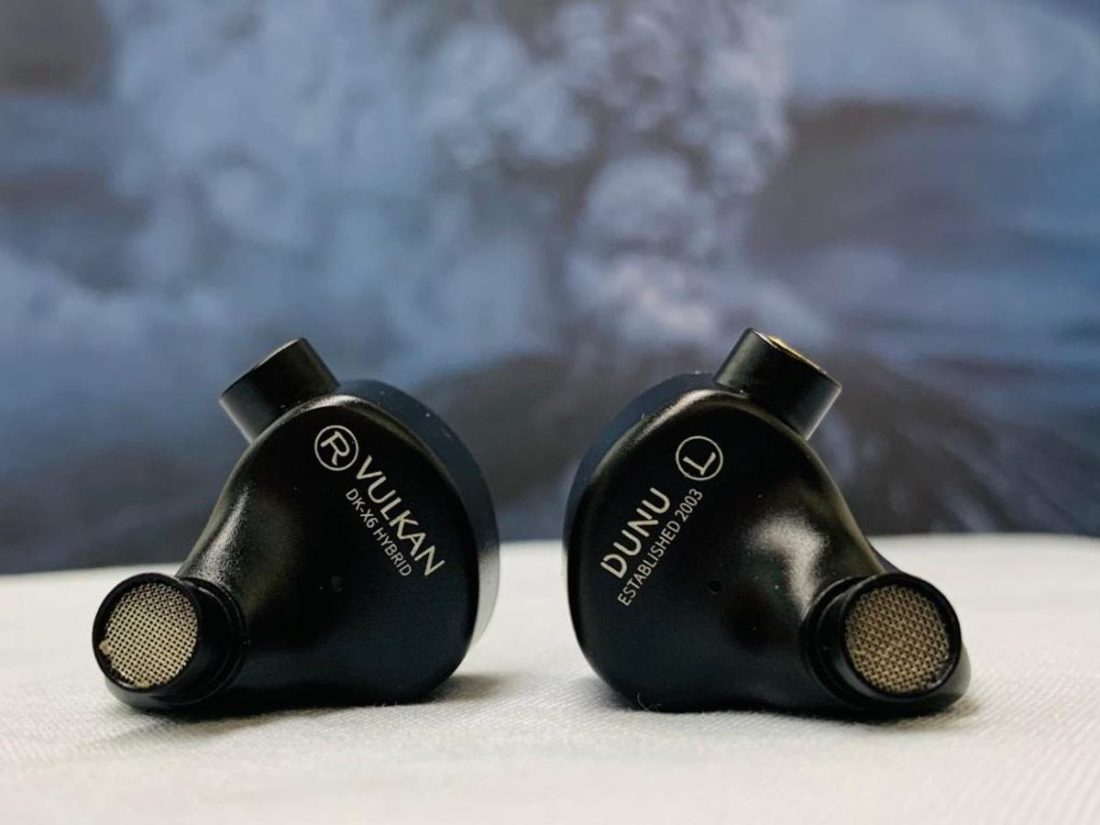
There are some weaknesses in the tuning, though: the 7-8 kHz region can be overly hot (akin to spewing lava), and micro-detailing could be improved. Purists may also find the Vulkan unsuitable for genres requiring a more neutral and uncolored bass.
However, looking past these nitpicks, the Vulkan will please bassheads, and they bring head-banging fun to the table. The Vulkan do not have the typical old-school V-shaped signature with an overly recessed midrange or mid-bass bleed that impinges into the other frequencies.
Like a volcano, the Vulkan’s sub-bass truly rumbles, and these definitely stand out in the mid-fi bracket with very special tuning.
